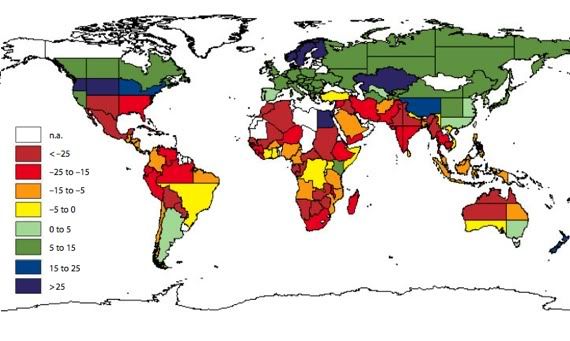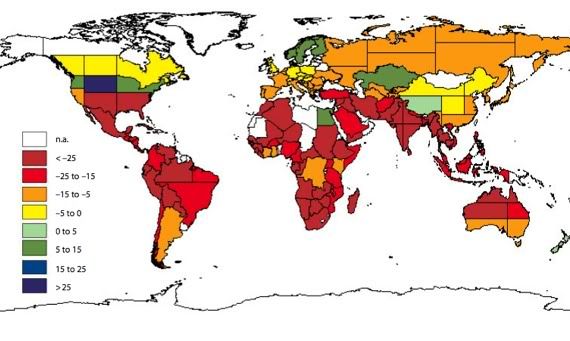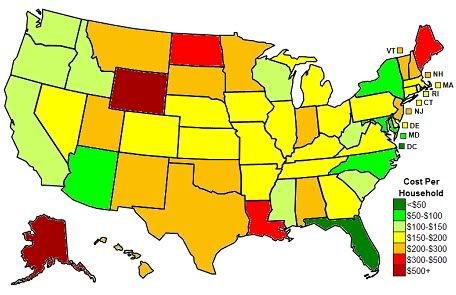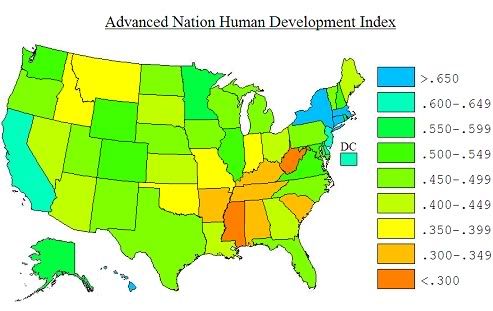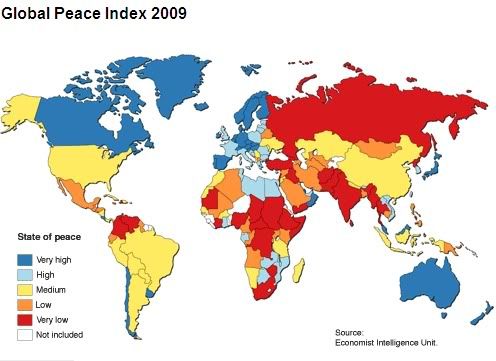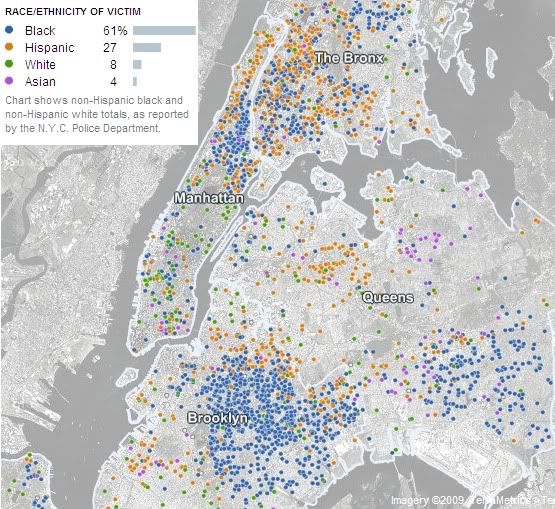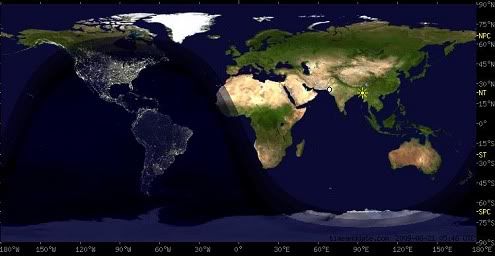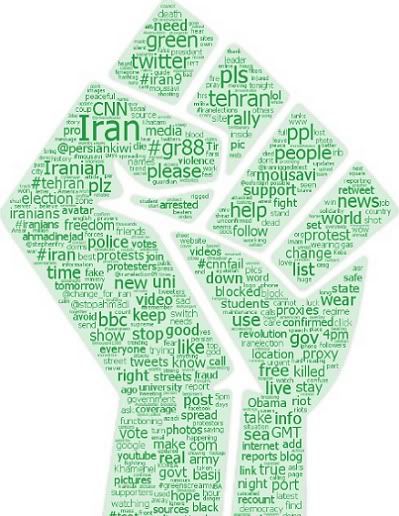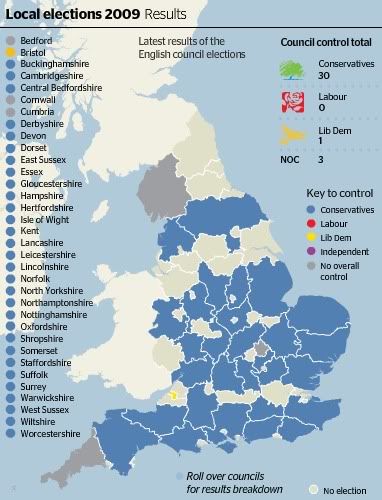Did the conservatives steal the election in Iran? We don't know yet, but there's been more than enough fishiness to warrant asking the question. One place to look for signs that the election was stolen would be the distribution of the vote. The powers that be haven't released results by province yet, but
Electoral Geography 2.0 does have this map of the Iranian presidential election
of 2005:

This shows the first round of voting - again,
from 2005 - in which Ahmadinejad actually came in second with 20.3% of the vote before winning the runoff against Akbar Hashemi Rafsanjani with more than 60%. In the first round Ahmadinejad won the provinces of Tehran, Qazvin, Qom, Markazi, Semnan, Esfahan, Chaharmahal and Bakhtiari, Yazd, and South Khorasan. His share of the vote varied widely; according to
this table, his lowest showing was 5.6% in Sistan and Baluchestan, and his highest was 55.2% in Qom.
But apparently in this weekend's election, Ahmadinejad won rather consistently across the board.
Juan Cole sees the apparently flat vote distribution as containing signs of fraud:
Top Pieces of Evidence that the Iranian Presidential Election Was Stolen
1. It is claimed that Ahmadinejad won the city of Tabriz with 57%. His main opponent, Mir Hossein Mousavi, is an Azeri from Azerbaijan province, of which Tabriz is the capital. Mousavi, according to such polls as exist in Iran and widespread anecdotal evidence, did better in cities and is popular in Azerbaijan. Certainly, his rallies there were very well attended. So for an Azeri urban center to go so heavily for Ahmadinejad just makes no sense. In past elections, Azeris voted disproportionately for even minor presidential candidates who hailed from that province.
2. Ahmadinejad is claimed to have taken Tehran by over 50%. Again, he is not popular in the cities, even, as he claims, in the poor neighborhoods, in part because his policies have produced high inflation and high unemployment. That he should have won Tehran is so unlikely as to raise real questions about these numbers. [Ahmadinejad is widely thought only to have won Tehran in 2005 because the pro-reform groups were discouraged and stayed home rather than voting.)
3. It is claimed that cleric Mehdi Karoubi, the other reformist candidate, received 320,000 votes, and that he did poorly in Iran's western provinces, even losing in Luristan. He is a Lur and is popular in the west, including in Kurdistan. Karoubi received 17 percent of the vote in the first round of presidential elections in 2005. While it is possible that his support has substantially declined since then, it is hard to believe that he would get less than one percent of the vote. Moreover, he should have at least done well in the west, which he did not...
5. Ahmadinejad's numbers were fairly standard across Iran's provinces. In past elections there have been substantial ethnic and provincial variations.
Indeed; see the map above. And some of these observations are confirmed by
this BBC report, ehich says that "[t]he [vote] figures, if they are to be believed, show Mr Ahmadinejad winning strongly even in the heartland of Mr Mousavi."
Is that plausible? In the first round of 2005 voting, here is how each of candidates did in their home province, again according to
this table (the home provinces are based on cursory Googlings of these candidates, so I may be wrong on a couple of them):
Ahmadinejad (Semnan province): 34.8%, first place
Karroubi (Lorestan): 55.5%, first place
Larijani (Qom): 2.3%, sixth place (though I'm not sure Qom should is really a "home"province for Larijani)
Mehralizadeh (East and West Azerbaijan; he is an ethnic Azerbaijani): 20.6% and 28.9%; first in both cases
Moin (Esfahan): 11.2%, t-fourth place
Qalibaf (Razavi Khorasan): 34.8%, first place
Rafsanjani (Kerman): 41.5%, first place
And here's how the candidates did
overall:
Ahmadinejad: 20.3%
Karroubi: 18.0%
Larijani: 6.1%
Mehralizadeh: 4.6%
Moin: 14.5%
Qalibaf: 14.5%
Rafsanjani: 22.0%
The only candidates to not win their home or ethnic-base province were Moin and Larijani. Given this pattern, it would be shocking if Mousavi, a more-than-credible candidate, didn't win in his own base of support (which, like that of Mehralizadeh, is in the Azerbaijans). But apparently, according to the BBC, that is just what happened. What's more, Mousavi's broader demographic base of support is in the cities throughout Iran; so for Ahmadidinejad to have gotten 57% in Tabriz, which is one of Iran's largest cities and the capital of East Azerbaijan, as Cole reports has been reported, really seems impossible - it would be like McCain beating Obama in Chicago.
All right, all of this amounts to circumstantial evidence that something weird happened with these elections. But is it definitive? Well, again, this blog has stumbled into speculation that is a bit beyond my pay grade. Nonetheless, it's worth noting some of the things that have happened in the last few days: former President Rafsanjani
has resigned from the Expediency Discernment Council and the Assembly of Experts in protest of the election results; Iranian authorities have
asked foreign reporters to leave the country; Mousavi has
written a letter to supporters in which he calls the election results "appalling" and "a dangerous plot"; the Election Commission is supposed to wait three days to certify the results, but they
went ahead and did it right away; and, of course, there have been large and sometimes violent protests in cities across Iran. I'm no expert, but those don't strike me as the sorts of events you'd expect to see following a fairly decided election.
